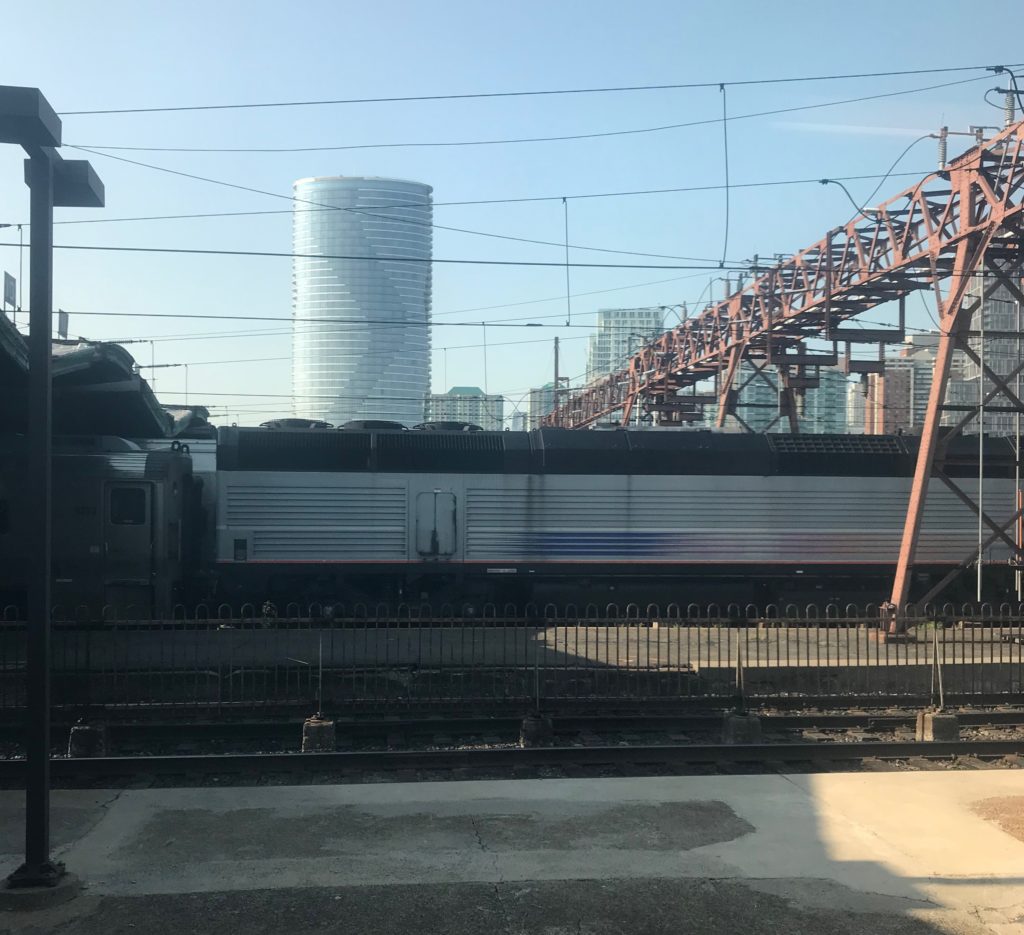NJ Politicians are Disconnected from Realities of Commuting into NYC
Listen to audio version of this article

It was just another summer time herky-jerky weekday commute on a New Jersey Transit train into Hoboken. At soon to be 64, it struck me that I might not live to see the construction of the additional trans-Hudson tunnel that we have been talking about for a big chunk of my adult life.
We came to one of those preliminary stops before your destination that’s signature NJT because the terminal stations can’t handle the volume of incoming trains. Over the years of delay and dysfunction, I have developed coping mechanisms to manage the stress related to being parked somewhere on the tracks in the awesome beauty that is the Meadowlands.
Unlocking my inner Thoreau, I have had the occasion to count the number of majestic blue heron waiting for a fish to give up its location and watch that magnificent bird take flight as I was at a dead stop standstill.
On this day when I looked out of the train window toward the Hudson County waterfront, in hopes of spotting something uplifting, I spotted a gleaming 21st century luxury high rise over in Jersey City that appeared like a tomorrow land mirage. Yet, in the foreground of the emerald tower, the rusting overhead catenary wires epitomize just how tethered we remain to yesteryear.
That’s when my eye caught the NJ Advance Media story with the details about Gov. Phil Murphy’s Italian villa where he and the first family are taking their 13 day-out-of-state vacation. The story explained how the Governor had purchased the mansion in Umbria back in 2004 after he had “amassed a fortune during his more than two-decade career at Goldman Sachs.”
That’s when it occurred to me why there has never been any urgency to the maintenance and repair of our public transit and infrastructure because the elected officials whose job it’s been are in a world apart from the daily grind of commuting. Many of them have no direct experience of what it’s like to pay first world prices for third world service. They don’t get to encounter day in and day out the growing mass of homeless humanity that our 21st century winner take-all society generates with soul-killing disregard.
What I have come to realize is that after decades of growing wealth inequality and wealth concentration we’ve now created two distinct and parallel universes, the gated community and everything else outside. There’s that luxury tower in Jersey City, chauffeured SUVs, and the summer get away in Umbria and then there is NJ Transit that’s used by people with a poverty of options who often serve the folks in the gated community.
To be sure, commuters and those of limited means for whom NJ Transit bus and trains are a lifeline, have our champions like Senate Majority Leader Loretta Weinberg who has tenaciously fought to hold agencies like NJ Transit and the Port Authority accountable.
What’s really disconcerting is that the decrepit state of New Jersey’s transit’s infrastructure is emblematic of a national crisis when it comes to the entirety of our nation’s critical infrastructure that includes not only our transportation system but our water, sewer and energy supply systems.
The minting of billionaires, the rise of New Age robber barons and the crushing of the middle class all happened while we failed to invest in the basic systems that sustain our way of life. At the same time, we racked up $22 trillion in debt on our national credit card and have nothing to show for it.
In 2017 the American Society of Civil Engineers gave the nation’s energy infrastructure a D+. By some estimates it would cost between $1.5 to $2 trillion to upgrade.
That same year, ASCE gave the national water supply system a D, reporting that much of the nation’s water supply pipes that were laid in the early 20th century had long passed their useful lifespan. While the lead contamination in the water supply in places like Flint and Newark make headlines the 240,000 water main breaks a year that waste two trillion gallons of potable water don’t float to the top of the news wave.
Similarly, ASCE report our waste water systems get only a D+ with an additional 56 million users to be connected to the already antiquated and overburdened systems over the next 20 years.
For whatever reason, once public discourse turns to the well documented state of disrepair of our infrastructure, it becomes like weight loss, something we talk about but we never get around to actually doing anything about.
Reduced to just a talking point it did not surface in the first round of Democratic Presidential debates and the odds are good it won’t in this next round. This lack of serious engagement on this pressing issue means the Democratic contenders are ignoring that three years into President Trump’s first term, despite all of his over the top rhetoric about being a great builder, his last most significant public works achievement remains the Central Park’s Wollman Ice skating rink in the 1980s.
What both he and Congress are doing is building a giant debt pyramid scheme with a budget deal to spend $2.7 trillion over the next two years including a $738 billion appropriation on the military that will make us less secure and does not address the real threat to our collective existence, global warming.
According to the Pew Research Center the nation’s $22 trillion government debt exceeds the nation’s gross domestic product and servicing it will cost taxpayers $593.1 billion in Fiscal Year 2019 that ends Sept. 30.
Think about that.
What could almost $600 billion dollars a year do for our infrastructure?
These days the only thing we seem to be really accomplished at his helping the rich get richer so they can spend more time in their world apart.





